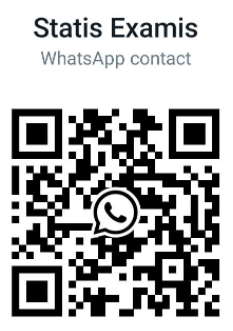Navigation » List of Schools » West Los Angeles College » Physiology » Physiology 101 – Introduction to Human Physiology » Fall 2020 » Lecture Exam 2(C)
Question #1
A glaucoma.
B presbyopia.
C cataract.
D hyperopia.
E myopia.
Question #2
A flatteningof the lens.
B contraction of the ciliary muscles.
C activation of the sympathetic nervous system.
D dilation of the pupil.
E increased rounding of the cornea.
Question #3
A Vision
B Proprioception
C pain
D Cold and warmth
E Pressure
F Sound
Question #4
A activation of her parasympathetic nerves inhibits contraction of her ciliary muscles.
B activation of her parasympathetic nerves causes sudden contraction of her ciliary muscles.
C she suddenly develops presbyopia.
D activation of her sympathetic nerves inhibits contraction of her ciliary muscles.
E activation of her sympathetic nerves causes sudden contraction of her ciliary muscles.
Question #5
A is where action potentials are first generated.
B contains voltage-gated channels.
C is found in the soma of the neuron
D contains ligand-gated channels
E is located in the axon hillock.
Question #6
A The term “adequate stimulus” means that a stimulus is strong enough to be detected.
B Sensory information that leads to conscious awareness of the stimulus is called transduction.
C Some sensory receptors are modifications of the peripheral endings of efferent neurons.
D The term “sensory unit” refers to a group of receptors that receive a particular stimulus and the afferent neuron associated with those receptors.
E All sensory information that reaches the brain can be experienced as a conscious sensation.
Question #7
A chemoreceptor
B photoreceptor
C thermoreceptor
D mechanoreceptor
Question #8
A 1,4,7,8,3,2,6,5,9,10
B 1,3,2,5,7,6,8,4,9,10
C 1,4,8,7,3,2,5,6,9,10
D 1,3,2,6,5,9,10,4,8,7
Question #9
A Primary Auditory cortex
B Occipital lobe association area
C Somatosensory cortex
D Parietal lobe association area
E Primary Visual cortex
Question #10
A plays a role in emotional and behavioral patterns.
B secretes hormones
C controls thirst, urine output, and food intake.
D inhibits muscle tone throughout the body.
E is a relay station for sensory input on its way to the cerebral cortex.
F functions as the body’s thermostat
Question #11
A FALSE
B TRUE
Question #12
A TRUE
B FALSE
Question #13
A 2, 1, 5, 4, 3
B 3, 1, 4, 5, 2
C 1, 4, 3, 2, 5
D 5, 4, 3, 1, 2
E 1, 2, 3, 5, 4
Question #14
A They are found deep in the cerebrum, surrounding the thalamus.
B They are all found in the parietal lobe of the cerebral cortex.
C Their main input is sensory information arriving along neurons that project directly from the thalamus.
D They integrate multiple types of sensory information and are responsible for complex processing of sensory information.
E They are the cortical locations where primary sensory information first arrives from specific ascending pathways.
Question #15
A serotonin
B acetylcholine
C norepinephrine
D histamine
Question #16
A acetylcholine
B serotonin
C histamine
D dopamine
Question #17
A histamine
B acetylcholine
C serotonin
D norepinephrine
Question #18
A dopamine
B histamine
C norepinephrine
D acetylcholine
Question #19
A acetylcholine
B norepinephrine
C dopamine
D serotonin
Question #20
A carry impulses from the periphery to the CNS.
B carry impulses from the CNS to the periphery.
C are part of the peripheral nervous system.
D transmit signals derived from afferent receptors up the spinal cord to the brain.
E relay messages from the brain down to the spinal cord to efferent neurons.
Question #21
A They sum excitatory and inhibitory synaptic inputs.
B They receive synaptic input from other neurons in the CNS.
C They make synapses on effector organs in the PNS.
D They deliver synaptic input on other neurons.
E They can transmit information between afferent neurons and efferent neurons.
Question #22
A They can be graded and vary with stimulus strength.
B They propagate without decrement.
C They always trigger action potentials.
D They are action potentials.
E They generally occur at the axon hillock of afferent neurons.
Question #23
A It pumps 3 Na + ions into the cell for every 2 K + ions it pumps out.
B It maintains an electrical gradient at the equilibrium potential of K +.
C It transports equal numbers of sodium and potassium ions with each pump cycle.
D It generates a small electrical potential such that the inside of a neuron is made negative with respect to the outside.
E It maintains a concentration gradient for K + such that diffusion forces favor movement of K + into the cell.
Question #24
A bind chemicals called odorants
B are replaced by cells known as basal cells.
C when stimulated send impulses both to the limbic system and to the cortex for perception of smell.
D are specialized endings of afferent neurons called chemoreceptors
Question #25
A The plasma membrane is completely impermeable to sodium ions.
B The concentration of sodium ion is greater inside the cell than outside.
C The permeability of the plasma membrane to potassium ions is much greater than its permeability to sodium ions.
D The plasma membrane is completely impermeable to potassium ions.
E The plasma membrane is most permeable to sodium ions.
Question #26
A trigger an excitatory postsynaptic potential.
B trigger an action potential.
C cause a change in membrane potential.
D depolarize a dendrite.
E be conducted to the axon hillock.
Question #27
A A decrease in receptor sensitivity despite continuation of a stimulus
B Persistence of the sensation of a limb even after it has been severed from the body
C A depolarization of receptive membrane that increase in magnitude as the stimulus intensity increases
D Information from sensory receptorsreaches the cerebral cortex and the person becomes aware of it
E Conversion of the energy of a stimulus into a pattern of electrical activity
Question #28
A increased neurotransmitter release from the synaptic terminal of the photoreceptor.
B bleaching of opsin.
C closure of Na+ channels and decreased Na+ flow into the photoreceptor
D decreased depolarization of the photoreceptor’s plasma membrane
E excitation of bipolar cells
Question #29
A Refraction
B Deflection
C Retraction
D Reflection
Question #30
A Only nerve and muscle cells have a potential difference across the membrane at rest.
B It requires ions to be distributed unevenly across the plasma membrane of a cell.
C It is oriented so that the cell’s interior is negative with respect to the extracellular fluid.
D It is not altered by changing concentration gradients of permeating ions.
E It has the same value in all cells.
F in neurons, it is created mainly by potassium ion leakage
Question #31
A bipolar, ganglion
B horizontal, inner
C somatic, catalyst
Question #32
A the hairs of the receptor cells of the Organ of Corti to be bent
B increased fluid pressure against the cochlear duct by the fluid of the scala vestibuli
C movement of the tectorial membrane relative to the vestibular
D movement of the basilar membrane relative to the tectorial.
E displacement of the round window, which dissipates pressure in the cochlea.
Question #33
A Pineal gland
B Pituitary gland
C Hypothalamus
D Mitochondria
Question #34
A All of these will not occur
B The repolarization phase of the action potential
C The depolarization phase of the action potential
D The graded potential
E The exocytosis of neurotransmitter
Question #35
A The breakdown of chemicals within the pepper causes exothermic reactions in the mouth.
B A chemical within the jalepeño acts as a stimulus for thermoreceptors.
C Friction while chewing activates thermoreceptors.
D All of the answer choices are correct.
E Chemoreceptors can activate heat sensing parts of the brain.
Question #36
A FALSE
B TRUE
Question #37
A Na+ voltage-gated channels.
B Na+ leak channels
C Na+/K+ pumps.
D K+ leak channels.
Question #38
A occipital lobes of the cerebral cortex
B frontal lobes of the cerebral cortex
C somatosensory cortex
D limbic system
E temporal lobes of the cerebral cortex
Question #39
A TRUE
B FALSE
Question #40
A both pens are activating the same receptor.
B both afferent neurons converge on the same interneuron.
C both sensations are grouped together in the somatosensory cortex.
D the receptors in both skin areas utilize the same afferent neuron.
Question #41
A TRUE
B FALSE
Question #42
A The patient would perceive a general sensation all over the body.
B The patient would perceive a general sensation over one side of the body.
C The patient would perceive a specific, localized sensation in one body area.
D The patient would perceive nothing.
Question #43
A Loss of pain in the left foot
B Loss of pain in the right foot
C Loss of both pressure sense and pain in the right foot
Question #44
A more positive than the equilibrium potential for potassium.
B equal to the equilibrium potential for sodium.
C equal to the equilibrium potential for potassium.
D more positive than the equilibrium potential for sodium.
E slightly more negative than the equilibrium potential of potassium ion.
Question #45
A nicotinic
B muscarinic
C adrenergic
Question #46
A photoreceptor
B nociceptor
C chemoreceptor
D thermoreceptor
Question #47
A chemoreceptor
B thermoreceptor
C nociceptor
D mechanoreceptor
Question #48
A thermoreceptor
B chemoreceptor
C nociceptor
D photoreceptor
Question #49
A mechanoreceptor
B photoreceptor
C chemoreceptor
D thermoreceptor
Question #50
A thermoreceptor
B photoreceptor
C nociceptor
D chemoreceptor
Question #51
A photoreceptor
B nociceptor
C chemoreceptor
D thermoreceptor
Question #52
A Terminal ganglia lie in a chain located along either side of the spinal cord.
B Terminal ganglia are the final common pathway for the autonomic nervous system.
C The terminal ganglia contain muscarinic receptors.
D the otic ganglia are found near the parotid gland
E Long parasympathetic preganglionic fibers end at the terminal ganglia, which lie in or near the effector organ.
F Terminal ganglia give rise to sympathetic neurons
Question #53
A final sensory perception
B control of breathing, circulation, and digestion.
C
D language ability
E personality traits.
F voluntary initiation of movement.
Question #54
A are found primarily in the heart.
B bind acetylcholine released from parasympathetic preganglionic fibers.
C bind with norepinephrine released from sympathetic postganglionic fibers.
D bind acetylcholine released from both sympathetic and parasympathetic preganglionic fibers.
E bind acetylcholine released from both sympathetic and parasympathetic postganglionic fibers.
Question #55
A mammilary body
B putamen
C substantia nigra
D caudate nucleus
E globus pallidus
F cingulate gyrus
Question #56
A the dorsal root conducts motor information
B spinal nerves are for the conduction of motor information only
C afferent, sensory neurons are unipolar neurons with cell bodies located in the dorsal root ganglion
D the ventral root contains axons of afferent, sensory neurons
Question #57
A mammillary body.
B cingulate gyrus.
C primary visual cortex
D amygdala.
E olfactory bulb
F hippocampus.
Question #58
A opens voltage-gated Ca 2+ channels in the presynaptic membrane.
B occurs when voltage-gated Cl- channels open in a postsynaptic cell membrane.
C stabilizes the membrane to remain at its resting potential.
D is a direct result of the opening of ligand-gated channels permeable to both Na + and K + ions in the pre-synaptic cell
E is a direct result of the opening of voltage-gated channels permeable to Na + ions in the post-synaptic cell
Question #59
A There are four different opsins in the retina.
B There are two basic types of photoreceptors in the retina, rods, and cones.
C There are four different chromophore moleculesin the retina.
D There are normally four different photopigments in the retina.
E Photoreceptors are neurons.
Question #60
A parasympathetic
B parassympathetic
C sympathetic
D assympathetic
Question #61
A The chromophore retinal undergoes a change of shape.
B The photoreceptor cells are stimulated and fireaction potentials.
C The concentration of cyclic GMP inside cells increases.
D There is an increase in neurotransmitter release from photoreceptor cells.
E The photoreceptor cell membranebecomes depolarized.
Question #62
A spinocerebellar tract
B lateral corticospinal tract
C medial leminscus tract
D anterior spinothalmic tract
E the posterior column
Question #63
A is comprised of lower motor neurons controlled by local circuit neurons and upper motor neurons arising from the cerebellum
B is comprised of lower motor neurons controlled by upper motor neurons arising from the motor cortex
C always results in muscle contraction
D is comprised of lower motor neurons controlled by local circuit neurons
E occurs in unmyelinated nerve fibers.
Question #64
A upper motor neurons
B gamma motor neurons
C nictonic motor neurons
D lower motor neurons
E delta motor neurons
Question #65
A 1, 7, 4, 6, 3, 2, 9, 8, 5
B 1, 4, 7, 2, 3, 9, 6, 5, 8
C 1, 4, 7, 2, 3, 6, 9, 8, 5
D 1, 4, 2, 3, 5, 6, 9, 8, 7
Question #66
A Black, White
B White, Gray
C Brown, Gray
D Gray, White
Question #67
A retina
B lens
C iris
D cornea
E ciliary muscle
Question #68
A No light will enter the eye and blindness will result
B Distance vision (e.g., reading a street sign)
C Both near and distance vision are fine, but changing back and forth between them becomes difficult
D Near vision (e.g., reading a book)
E Both near and distance vision are compromised




